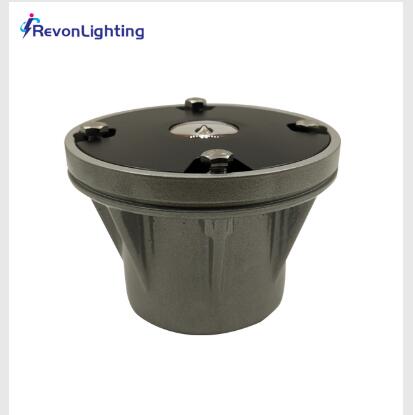Infrared (IR) light for helipad applications has revolutionized nighttime aviation by providing improved visibility, security, and operational efficiency. As helicopters frequently operate in challenging conditions, particularly in low-light environments, IR lighting ensures safe landings and takeoffs without interfering with night vision equipment. This article explores the importance, benefits, and technical considerations of IR light for helipad operations.
The Importance of IR Light for Helipad Safety
Helipads are critical for emergency response, medical evacuations, military operations, and offshore facilities. However, nighttime and adverse weather conditions pose significant challenges for pilots attempting to land safely. Traditional visible lighting, while effective, can sometimes create glare or be ineffective in fog, rain, or dust. IR light for helipad applications addresses these issues by offering illumination detectable through night vision goggles (NVGs) without producing excessive visible light.

Key Benefits of IR Light for Helipad Applications
1. Improved Pilot Visibility with NVG Compatibility
One of the most significant advantages of IR light for helipad use is its compatibility with night vision goggles. Standard lights can be overwhelming or ineffective in certain conditions, whereas IR lighting provides clear guidance without compromising a pilot’s ability to see their surroundings. This feature is particularly beneficial for military and law enforcement operations that rely heavily on NVGs for low-profile landings.
| ir light for helipad |
| ir lights for helipad |
2. Enhanced Covert Operations
In military applications, maintaining a low visual signature is crucial. IR light for helipad operations allows helicopters to land with minimal light pollution, making detection by unauthorized personnel more difficult. This feature is also useful in covert emergency response missions where reducing visibility is necessary for security reasons.
3. Increased Safety in Harsh Weather Conditions
Unlike traditional lighting, IR lights can penetrate fog, dust, and rain more effectively. These environmental factors often obscure visible lighting, making it difficult for pilots to identify landing zones. IR light enhances situational awareness and ensures safe approaches under adverse conditions.
4. Energy Efficiency and Longevity
IR lighting systems are typically designed with LED technology, which offers energy efficiency and a long lifespan. Compared to traditional incandescent or halogen lights, LEDs require less maintenance, consume less power, and provide consistent performance over extended periods, making them ideal for remote and high-usage helipads.
Technical Considerations for Implementing IR Light for Helipad
To effectively deploy IR lighting on a helipad, several factors must be considered:
1. Light Placement and Configuration
Proper positioning of IR lights is crucial to ensuring an optimal landing experience. Typically, IR lighting is arranged in a circle or cross pattern around the helipad, providing clear guidance for approaching helicopters. The lights must be evenly distributed to avoid blind spots or uneven illumination.
2. Integration with Standard Lighting
While IR lighting is effective for NVG-equipped operations, it is often necessary to integrate it with visible lighting for non-NVG flights. A dual-mode lighting system can provide flexibility, allowing operators to switch between IR and standard lights as needed.
3. Compliance with Aviation Standards
Regulatory bodies, such as the Federal Aviation Administration (FAA) and the International Civil Aviation Organization (ICAO), set guidelines for helipad lighting. Ensuring that IR lighting systems comply with these regulations is essential for safety and operational approval.
4. Power Supply and Backup Systems
IR light for helipad use should be supported by a reliable power source, with backup systems in place in case of failures. Solar-powered IR lights are a viable option for remote locations, reducing dependence on traditional electrical grids.
Applications of IR Light for Helipad Operations
The use of IR lighting extends across various sectors:
Medical and Emergency Services: Helicopter emergency medical services (HEMS) rely on IR lighting for rapid patient transport, particularly in rural or disaster-stricken areas where lighting infrastructure is limited.
Military and Law Enforcement: Covert operations benefit from IR lighting’s low visibility, allowing secure landings without alerting adversaries.
Offshore and Industrial Sites: Oil rigs, remote industrial sites, and maritime platforms use IR lights to ensure safe helicopter operations in challenging environments.
Private and Commercial Aviation: High-end private helipads and corporate aviation facilities integrate IR lighting for enhanced safety and night-time accessibility.
The Future of IR Light for Helipad Safety
As technology advances, the integration of IR light with automated landing systems and smart aviation infrastructure is expected to improve further. Innovations such as AI-driven lighting adjustments, adaptive brightness control, and real-time weather response systems will enhance the safety and efficiency of helipad operations.
With increasing demand for night-time and low-visibility operations, the implementation of IR light for helipad use continues to expand. This technology not only improves safety but also ensures that critical helicopter missions, whether for medical, military, or commercial purposes, can proceed without disruption.
By leveraging the benefits of IR lighting, helipad operators and pilots can navigate challenging environments with confidence, ensuring that every landing is as safe and precise as possible.